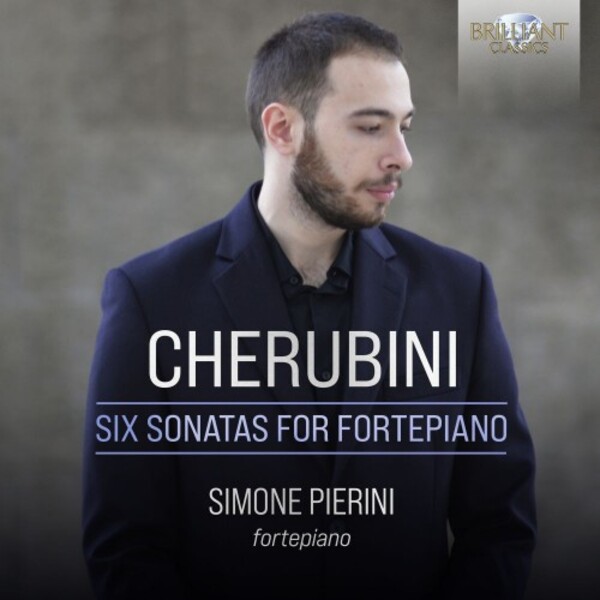
Cherubini - 6 Sonatas for Fortepiano
£9.45
In stock - available for despatch within 1 working day
Despatch Information
This despatch estimate is based on information from both our own stock and the UK supplier's stock.
If ordering multiple items, we will aim to send everything together so the longest despatch estimate will apply to the complete order.
If you would rather receive certain items more quickly, please place them on a separate order.
If any unexpected delays occur, we will keep you informed of progress via email and not allow other items on the order to be held up.
If you would prefer to receive everything together regardless of any delay, please let us know via email.
Pre-orders will be despatched as close as possible to the release date.
Label: Brilliant Classics
Cat No: 96246
Format: CD
Number of Discs: 1
Genre: Instrumental
Release Date: 24th February 2023
Contents
Artists
Simone Pierini (fortepiano)About
The Florence-born composer Luigi Cherubini (1760–1842) published his Sei Sonate per il Cimbalo around 1780; they are currently believed to be the first published work by the composer, although he had written operas and religious music prior to the publication of this work. Cherubini had moved to Bologna then Milan around that same year to study with Giuseppe Sarti (1729–1802). His chef d’oeuvre is generally recognised to be the Requiem in C minor, composed for the commemoration of the 24th anniversary of Louis XVI’s death. His compositional efforts in opera include tragedies lyriques (Démophon, Les Abencerages, Ali Baba) and opéra-comiques (Lodoïska, Medée, Faniska, Bayard à Mézières), as well as other operatic forms. In 1821, he was appointed director of the Paris Conservatory, after a highly acclaimed career as a composition teacher.
Although this was the only solo keyboard work written by Cherubini, the sheer brilliance of these sonatas allows them to be considered a pinnacle in this genre, proving the early maturity of their composer. The style of these sonatas is not too far from the musical fashion of the time: they all consist of two movements, the first in sonata-form, the second a rondò where the second theme is typically characterised by highly virtuosic writing. All six sonatas follow this strict formal code, however, Cherubini manages to create a surprising variety in the themes and their development. Each sonata could, in fact, depict a different stock character from the commedia dell’arte, with their strict formal codification employed in a theatrical way thanks to the perfect balance of ideas set out each time. Even the bass seems to be adjusted depending on the mood of the theme – Cherubini employs Murky bass, Alberti bass and even counterpoint. The harmonic closeness between the key signatures of each sonata gives further cohesion to the whole set.
After careful consideration, Simone El Oufir Pierini found the fortepiano to be the best instrument to play these works on, although in the printed edition it was explicitly said that they should be played on the harpsichord. The piano, a new instrument, was highly favoured by the new Tuscan court, and the potential of this new instrument was sought out with keen interest by composers. The employment of the fortepiano for these sonatas hopefully sheds new light on these pieces, written by one of the most influential composers of the time.
Born in Rome in 1996, Simone Pierini began studying music at the age of eight. Aged eighteen, he graduated in piano at S. Cecilia Conservatory of Music, Rome, with highest honors, and consequently took part in masterclasses and post-graduate courses. He afterwards grew interest in historically informed piano practice, attending masterclasses led by Alexei Lubimov, Andreas Staier, Tobias Koch, Stefano Fiuzzi. Subsequently, his interest about historical keyboards in general grew further, and he began studying harpsichord and basso continuo with such teachers as Andrea Coen and Giovanni Togni. He builds an active concert career, and this recording marks his CD debut for Brilliant Classics.
Error on this page? Let us know here
Need more information on this product? Click here